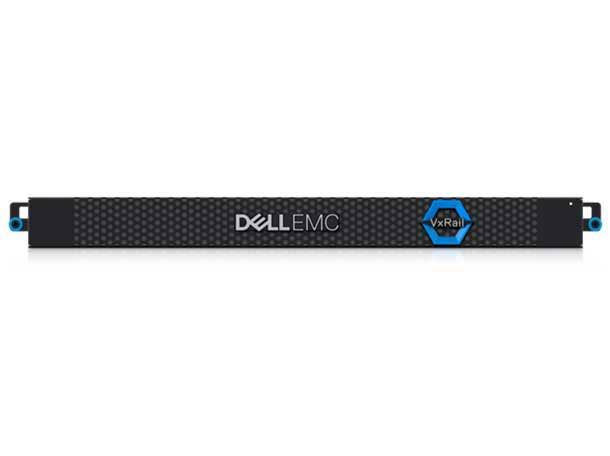Dell’s New ‘Extreme’ $20K VxRail ‘Opens Doors’ At The Edge
“I’ve had customers asking for an AMD [VxRail] flavor for about two years. So I’m really excited about this because of the ability to get the high core counts into a small footprint and bringing cost for performance down for a lot of our SMB customers,” says VirtuIT Systems’ Josh Lee.

Dell Technologies is disrupting the hyperconverged market by launching its new VxRail E-Series, which for the first time ever has AMD-based processors, as well as a new VxRail D-Series that has a starting price point of only $20,000.
“There’s a wide range of new environments that hyperconverged infrastructure has never gone to. So we’re taking HCI to the extremes – that’s the whole genesis of these offers,” said Shannon Champion, director of HCI and CI product marketing at Dell Technologies in an interview with CRN.
Dell’s first-ever ruggedized VxRail D-Series is the company’s smallest and lightest hyperconverged system ever that is available at a starting price point of approximately $20,000 per 3-node cluster with one-year of ProSupport. The new compact and durable D-Series is only 20 inches deep and designed for the edge to withstand extreme temperatures, sustain 40G of operational shock and operate at up to 15,000 feet.
“So you can take VxRail onboard ships at sea, in aircrafts, edge facilities, industrial settings – you’re going to see some cool places where VxRail will pop up,” said Champion. “We designed it with ‘extreme’ in mind at a small price point with all these ruggedized capabilities that still benefits from the same VxRail HCI System Software.”
[Related: Dell Hits ‘Home Run’ With New All-Flash, NVMe Storage Line]
Josh Lee, director of sales at VirtuIT Systems, a Nanuet, N.Y.-based Dell Technologies partner, said Dell is giving partners an “easy button” to attack the edge and new verticals.
“For customers that have a lot of sensors, are leveraging IoT and collecting data at the edge – whether it’s in healthcare, banking, etc. – where all their data is being generating, we can say, ‘Here’s an easy button of how to consume all of this,’” said Lee. “It gives us the opportunity as a partner to expand to other verticals that we traditionally haven’t sold in. It will open new doors.”
In another monumental launch, Round Rock, Texas-based Dell unveiled the new VxRail E-Series which includes AMD processors for the first time ever compared to VxRail’s traditional Intel-based processors.
The VxRail E-Series includes 2nd generation AMD EPYC professors that offer customers up to 64 high performance cores and support for PCIe 4. Coupled with high-efficiency power supply, the compact 1U systems are ideal for customers that need high-performance computing power in a single socket platform for edge environments, said Dell’s Champion.
VirtuIT Systems Lee said customers have been asking for years for a VxRail solution that is based on AMD processors.
“I’ve had customers asking for an AMD flavor for about two years. So I’m really excited about this because of the ability to get the high core counts into a small footprint and bringing cost for performance down for a lot of our SMB customers,” said Lee.
The new VxRail E665 system is available in NVMe, all-flash, or hybrid storage configurations. It offers high performance in a single-socket model and is an ideal option for database, unstructured data, virtual desktop infrastructure (VDI) and high-performance computing (HPC) workloads.
Dell’s Champion said the new addition of AMD EPYC processors creates more choice and flexibility for customers.
“From a channel partner perceptive, customers are starting to make their mind up in terms of leaning toward one direction or another. We’ve been and continue to be really in lock-step with Intel,” she said. “Being able to provide the AMD EPYC processors for the E-Series in a very small footprint with some of the performance capabilities from AMD -- and the ability to offer a wide range of those storage configurations like NVMe, all-flash or hybrid – allows you to have it at the edge in a small form factor but use it for things like database, VDI and unstructured data workloads.”
Another key feature in the new VxRail’s are upgrades to the platforms HCI System Software. The revamped software streamlines updates with the ability to run pre-upgrade health checks on demand and cloud-based management and orchestration, enabling every VxRail cluster to be maintained throughout its lifecycle, regardless of location.
Additionally, VxRail now supports Intel Optane Persistent Memory and Nvidia’s Quadro RTX and vGPU software. VxRail is the only hyperconverged system that is jointly engineered by both Dell and VMware.
Looking at the edge, IT research firm Gartner expects that 75 percent of enterprise-generated data will be created and processed outside the traditional centralized data center or cloud by 2022.
“We’ve traditionally gone after the core data center and core VMware workloads, but some of the new Dell products like these new VxRail’s and PowerScale with DataIQ, we’re now able to do a lot more where we can have conversations with customers about their data, how to get insights from their data and how to monetize that,” said Lee. “I’m real excited about what Dell is doing at the edge.”